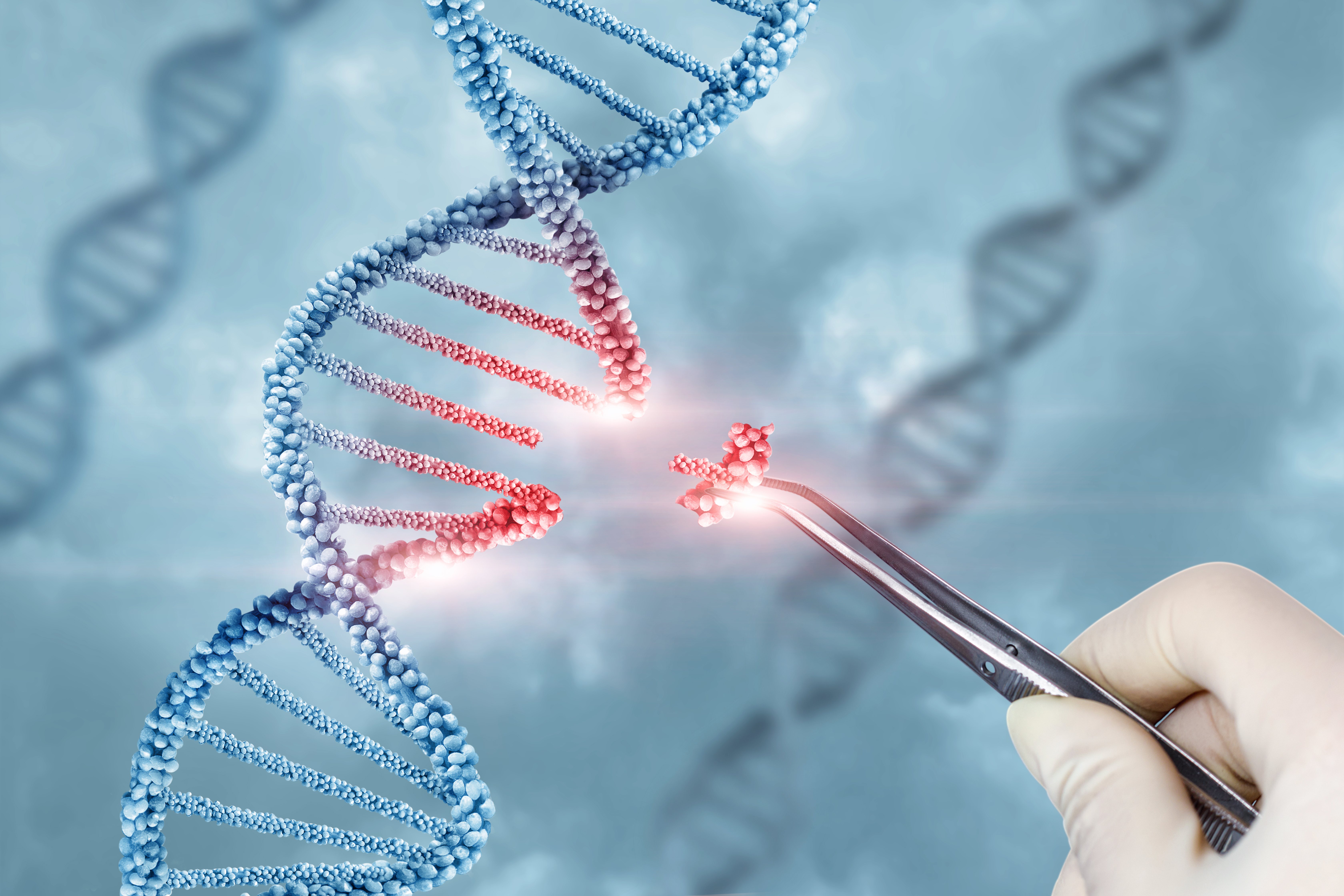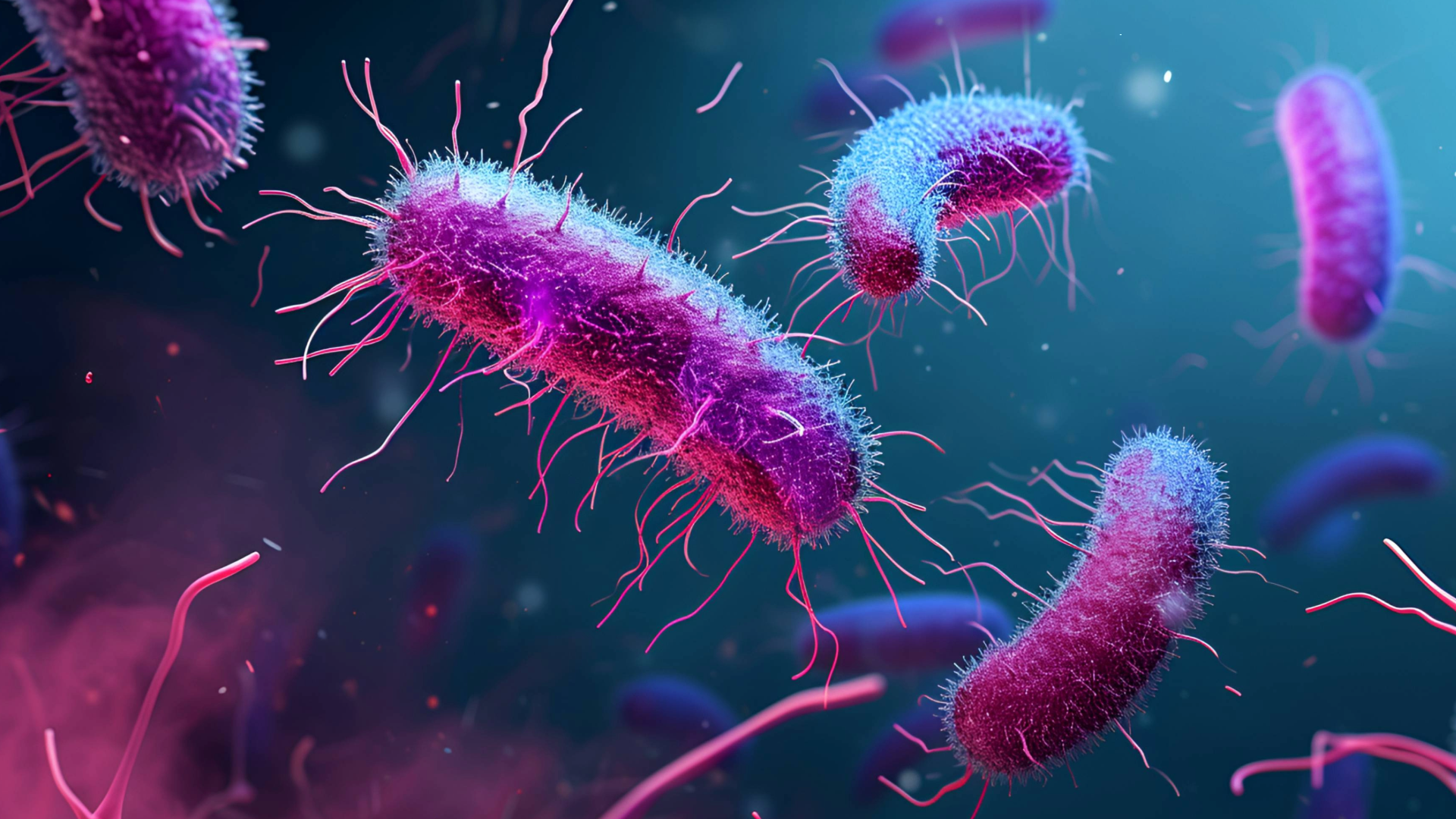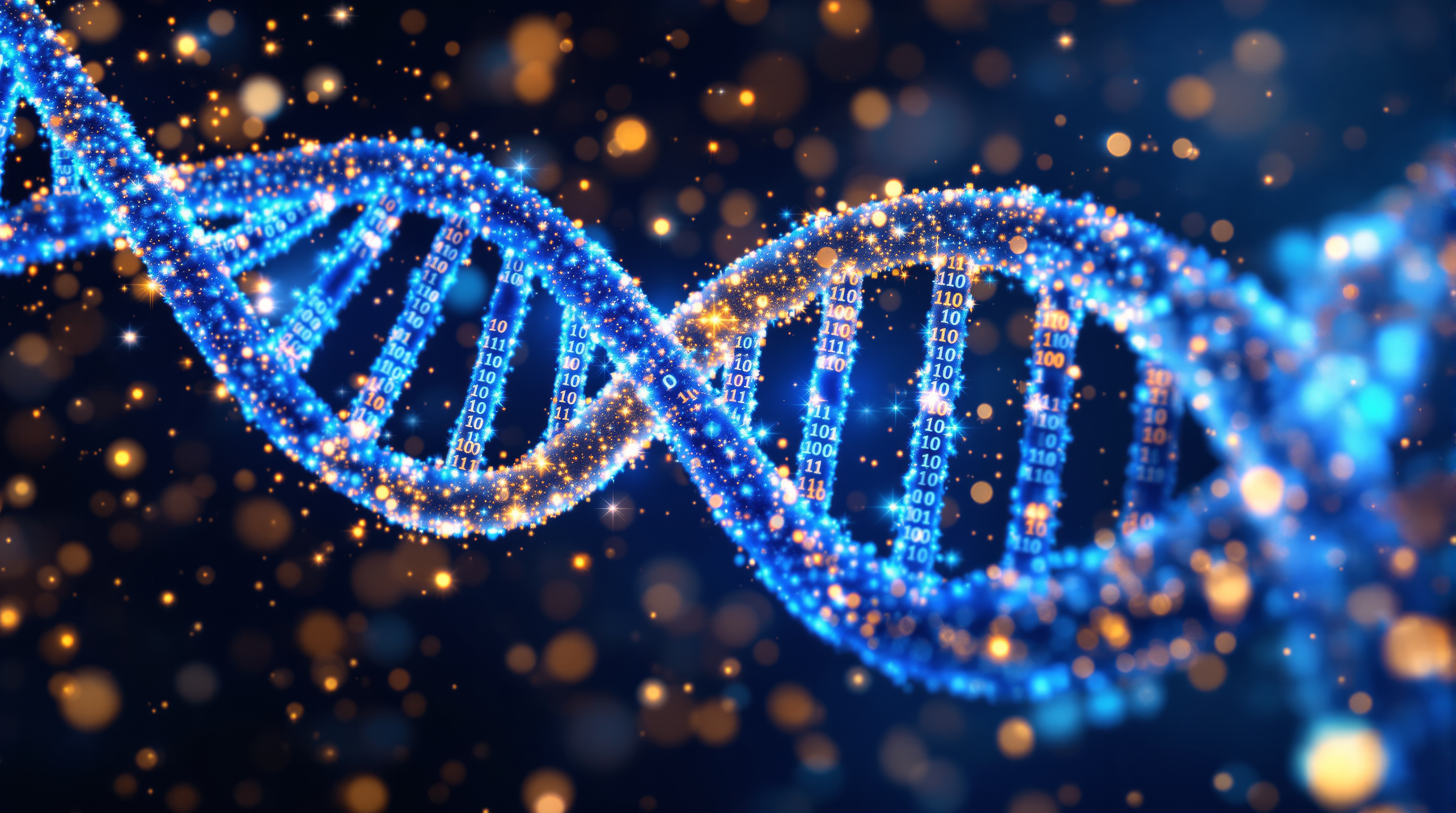
AMILI co-founder Dr Jeremy Lim takes us on a tour of his remarkable lab, where the mysteries of the gut microbiome are being unlocked to treat cardiovascular, brain, gut, metabolic and other disorders.
Forward: features are independent pieces written for Mewburn Ellis discussing and celebrating the best of innovation and exploration from the scientific and entrepreneurial worlds.
What is a human being?
The glib answer is... Homo sapiens, based on DNA located in 23 chromosomes, bipedal mammal, opposable thumbs and (mostly) high intelligence.
But that misses important aspects of our being. In addition to our chromosomal DNA, we have mitochondrial DNA, which we inherit from our mother. The mitochondrion and eukaryotic host cells have lived together in harmony since colliding 1.5 billion years ago.
So we are a coalition of two genetically distinct organisms. We are symbionts. But even this label only scratches the surface.
To survive, humans are reliant on the microbiome – the galaxy of bacteria, viruses, archaea and fungi in the lungs, skin, menstrual blood, breasts, hair and guts. There are 100 trillion bacterial cells and thousands of species of virus co-existing within us.
We are not individuals. We are holobionts – an ecosystem composed of a multitude of organisms. The human element of our DNA is in the minority, outnumbered ten-fold by bacteria and 100-fold by viruses.
Understanding the workings of the microbiome is in its infancy. Around 30% of the microbiome is unmapped. And the interaction of the trillions of cells is only slowly being deciphered.
So who better to turn to for illumination than Dr Jeremy Lim, the head of AMILI, the name derived from Asia, microbiome and library.
From his office in Singapore, Lim explains the reason for a library devoted to Asian microbiomes.
‘The microbiome is profoundly affected by diet and lifestyle,’ says Lim. ‘Compare someone in the UK and someone in Singapore and they might only share 20–30% of the microbiome.’
In some countries, such as Japan, there are local peculiarities. For example, one strain of bacteria thrives on the seaweed eaten by many Japanese; this is rarely found in European guts. ‘Ninety per cent of Japanese have this microbe to break down seaweed,’ says Lim. ‘In the western world, fewer than one in ten do.’
So the region needs its own library.
‘Public registries of microbiome sequences are overwhelmingly based in North America and Europe. Southeast Asia in particular, with its multiple ethnicities, is massively underrepresented. This is a huge problem.’
The importance of the work stems from the health implications of the microbiome. Research points to a profound connection between gut composition and a long list of conditions, including depression, asthma, eczema, irritable bowel syndrome, allergies, strokes, cancers of every flavour, diabetes and Alzheimer’s. This is a mere fraction of the full list.
The links can be startling. In a study of 192 women undergoing embryo transfer, failure could be predicted in 32 of the 34 women based on their vaginal microbiota composition.
In an analysis of 2,124 people suffering from depression, quantities of the Coprococcus and Dialister spp. – bacteria that produce the hormone dopamine – were significantly lower.
Understanding the microbiome is essential for understanding how our bodies work.
‘I confess, I was introduced to the term “microbiome” only a couple of years ago,’ says Lim. ‘When I was in medical school 30 years ago, there was no such thing as the microbiome. We called the microbes in the gut “commensals”. There was the erroneous belief that they didn’t do very much. Just digestion and some minor vitamin metabolism.’
AMILI’s missions
Lim has two goals for his institution. The first is research.
‘When we founded AMILI in 2019, we wanted to build a library of what the multi-ethnic Asian microbiome looks like. There are good databases coming out of China, South Korea and Japan, but they tend to be more homogenous. Whereas in Southeast Asia, particularly Singapore and Malaysia, there tends to be a greater mix, including expatriates from all over the world. When we started, only half of Singaporeans had even heard of the microbiome. We want to jumpstart the ecosystem.’
The second aim is to create therapies. In the long run, these may include detailed plans based on specific microbes, but the current thinking is to transfer whole microbiomes from donor to patient.
This is a fecal matter transfer, or FMT. Pills can be taken orally – with the light-hearted nickname crapsules – or via the rectum.
‘It’s like a hard reset of your computer,’ says Lim. ‘FMT is typically offered to patients with a dysbiotic or abnormal microbiome. A microbiome is harvested from a healthy person and processed to ensure it does not include any pathogens. The patient is given oral antibiotics to clear out the gut. The donor microbiome is then delivered, typically through colonoscopy.’
The result? ‘For conditions such as bacterial overgrowth syndrome, the cure rate is in excess of 90%.’
The applications are broad. In a study at Boston Children’s Hospital to treat peanut allergies, antibiotics were followed by FMT crapsules. The treatment raised tolerance in children from 100mg to 600mg before having a reaction. In another study on addiction, 20 patients with alcohol dependence syndrome were given a FMT from healthy donors. A control group was given a placebo. Ninety per cent of the treated group experienced reduced cravings compared with 30% in the placebo group. The study reported improved cognition – another indicator of how the microbiome influences brain function.
Currently donors are grouped into four or five microbiome categories. A crude categorisation, given the near limitless combinations of viruses, fungi, protozoa and bacteria in the gut alone. But it’s good enough.
Lim wants to move beyond this.
‘The billion-dollar question is what makes the transplant so effective? Of the trillions of microbes, which are the most relevant ones? If we can figure that out, two things happen. First, we can avoid giving an entire transplant from a healthy donor, just the microbes the patient needs. Second, we could grow the relevant microbes in a lab. We would then be donor-independent, which is important given how hard it is to find suitable donors.’
This second point is significant. Finding healthy donors prepared to deposit their feces into sample bottles is a bottleneck the industry could do without.
Mastery of the microbiome could reveal new ways to detect or treat illnesses. For example, the correlation between microbiome composition and disease is being revealed in multiple studies, but the cause and effect are elusive.
‘We have been privileged to be part of a multi-agency study here in Singapore to look at individuals who are at high risk of liver cancer. They have underlying viral hepatitis, alcoholic liver disease and other conditions. Initial studies show those who progress to liver cancer have a very different baseline microbiome to those who don’t. We are now thinking maybe we can develop a predictive test. We can tell a patient: “Mr Wilson, you have a 75% chance of developing liver cancer,” so we will offer an ultrasound or some other screening modality much more frequently so any cancer developing is picked up early with much better treatment results. We could also reduce the risk of cancer development through supplementation and changes in diet.’
There is potential to address adenoma carcinoma, something AMILI co-founder Jonathan Lee takes an active interest in. Lim says: ‘We know you must have polyps before developing colon cancer and there are certain microbiome changes that are highly predictive of polyps. The excitement is that we can spot polyp formation before it develops, and recommend diet and lifestyle changes to help vulnerable patients. It could be tremendously impactful.’
The library
So what exactly does a visitor see on a tour of AMILI? Lim admits the visual impact is underwhelming. ‘We don’t have a walk-in wardrobe,’ he says with a chuckle. ‘We don’t want people walking in and out, opening the freezers given the need for temperature control to preserve the microbes. So it’s not spectacular, just boring white freezers. Inside are thousands of little health records. We curate every sample very carefully!’
When a sample is taken it is sequenced. ‘We do shotgun sequencing. This means it is an untargeted reading analysis, so we can show up things no one has characterised. We then match the results against known libraries.’
The logistics are impressive. Dr James Kinross, in his excellent book on the microbiome, Dark Matter, calculates that if the metagenomic data from the gut of a single human were stored in typical 256GB smartphones, it would need 400,000 phones.
‘The human genome is about 23,000 genes,’ says Lim. ‘The average person’s microbiome is two to three million genes. It is orders of magnitude larger. Our work is bloody expensive!’
Work like this takes capital. AMILI sells probiotics and prebiotics (the former contains helpful microbes such as live bacteria and yeasts, the latter are supplements that aid the growth of good microbes) specially formulated for multi-ethnic Asia to clinics and hospitals, but not directly to consumers. ‘It made no sense for us to compete in the B2C space. There are so many brands on shelves already. It’s not what makes us different.’
Today, AMILI has three assets for discovery that it then translates into products and services. It has the database, the physical sample library, and PRIME, a set of analytic tools, informatics and discovery engines. ‘We work with clinics and health professionals,’ says Lim. ‘But we are very fortunate. We’ve raised money and will be looking to enter the capital markets again towards the second half of next year.’
It feels like investors’ money is being very well spent. Decoding the microbiome could revolutionise the treatment of an extraordinary array of diseases, from cancers and Alzheimer’s to addiction and acne. Personalised microbiome treatments could be a staple of medicine in the 2030s. Lim and his team at AMILI are ensuring the 700 million citizens of Southeast Asia will be at the forefront of any breakthroughs.
And as understanding of the microbiome grows, so does our understanding of who we are. AMILI is more than a scientific project. It is a mission to discover who we – the wider we, the holobionts – truly are.
How to build a healthy gut microbiome
Fostering a diverse gut microbiome is essential for good health. Jeremy Lim says the average gut of a person in San Francisco has a third to a quarter of the diversity of that of a hunter gatherer. This is due to poor diet – both too homogenous and reliant on ultra-processed foods.
So what is Lim’s advice?
‘I tell my patients to remember the 3Fs.
‘Fresh. In Singapore, we are lucky to have a lot of fresh fruit and vegetables. There are food deserts in the US, which make it harder [to eat these foods]. Avoid ultra-processed food and stick to fresh.
‘Fibre. Whatever we don’t eat, the microbes eat. So you want fibrous food. In particular, there are many insoluble fibres that the microbes eat to produce fatty acids to stabilise our gut lining and improve our brain health.
‘Fermented. Every culture has some sort of fermented food. Sauerkraut, kimchi, kefir and pickles. Whatever our forefathers knew, they were incredible. They figured out eating fermented foods is good for microbes.’
The microbiome’s wide-ranging role in human health
Eliot Ward, Partner and Patent Attorney at Mewburn Ellis, comments:
“The more we learn about the microbiome’s wide-ranging role in human health, the more amazing it seems. It is sparking innovation beyond the traditional realm of treatments for disease. People are now trying to map and monitor the human microbiome to predict people’s responses to all kinds of therapies and lifestyle changes. Each new insight raises the prospect of useful new applications. But unique challenges arise when protecting innovations in this field, which should be carefully considered at an early stage. It is essential to strike the right balance between disclosure, trade secrets and patents to ensure the value of your innovation can be realised.”
Written by Charles Orton-Jones
Eliot handles a diverse client portfolio spanning the life sciences sector and a growing practice in the cross-over space between physics and biology. A skilled patent prosecutor, Eliot also has wide experience of drafting patent applications on breakthrough technologies, as well as leading offensive and defensive opposition proceedings post-grant. Eliot is also experienced in handling Freedom to Operate projects and in performing due diligence, which have led to the successful completion of high value transactions and investment rounds.
Email: eliot.ward@mewburn.com
Sign up to our newsletter: Forward - news, insights and features
Our people
Our IP specialists work at all stage of the IP life cycle and provide strategic advice about patent, trade mark and registered designs, as well as any IP-related disputes and legal and commercial requirements.
Our peopleContact Us
We have an easily-accessible office in central London, as well as a number of regional offices throughout the UK and an office in Munich, Germany. We’d love to hear from you, so please get in touch.
Get in touch

